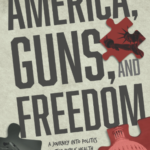American Political Tradition Revised
For more than a half a century, The American Political Tradition and the Men Who Made It has been a widely used textbook in both college and high school advanced placement courses. For about the same time period, it has been misleading students everywhere.
For example, the author of the book, Columbia professor Richard Hofstadter offered up a chapter on Abraham Lincoln that never mentioned the Gettysburg Address. In like fashion, he claimed that the authors of the constitution “wanted freedom from fiscal uncertainty and irregularities in the currency, from trade wars among the states, from economic discrimination by more powerful governments, from attacks on the creditor class or on property, from popular insurrection.”
David S. Brown, a professor at Elizabethtown College, gives us a valuable, thoroughly researched “intellectual biography” of Hofstadter, probably the first of its kind. Clearly Brown admires the academic icon who passed away at the age of 54 in 1970.
For instance, he notes that The American Political Tradition’s “enduring success—over 200,000 copies sold in its first half century in print—attests to its author’s impressive ability to communicate intellectual history to a general audience.” But in one of the most liberal cities in America, I could find only one copy of this “successful” book.
Who is snapping up these treasures? “In Hofstadter’s case, The American Political Tradition proved to be a remarkable example of scholarship that appealed to both the professors and the public,” Brown writes. “How many books reviewed by the eminent Harvard literary historian Perry Miller found their ways into the nation’s high schools?”
Public school teachers who govern such book migrations hardly constitute a representative cross-section of the American public. Where the book is most valuable is in its examination of Hofstadter’s approach to history, and the impact it had that still dominates the academy.
“There was still among many historians at that point and time very much the ideal of the historian as someone who worked exclusively from primary sources,” one of Hofstadter’s students in the 1950s, Dorothy Ross, told Brown. “The research and getting the facts was the important thing.”
“What Hofstadter made clear to his students is how important the interpretation and the language and the presentation are and I think many of us felt this was something we might aspire to.” Ross is now a professor of intellectual history at Johns Hopkins University.
Many of Hofstadter’s students hold tenured, influential positions in higher education. Current Columbia historian Eric Foner is another of Hofstadter’s former students.
Ironically, having mentored a generation of today’s academic superstars, Hofstadter lived long enough to see the campus uprisings of the 60s. “The revolt of the universities struck Hofstadter as a particularly inexplicable phenomenon,” Brown writes. “His students enjoyed unprecedented educational opportunities, experienced less overt racism or ethnic prejudice than previous generations, and received the material benefits of an affluent society.”
“Their protest appeared irrational.” But the best was yet to come. After writing seminal works of revisionist history, Hofstadter got to see revisionist history at its worst.
“After referring to the Nazi-Soviet pact in a public lecture at San Francisco State University, Hofstadter was shouted off the stage,” Brown recounts.
“He was mystified,” UCLA historian Robert Dallek, another of Hofstadter’s students, told Brown. “It was as if he had invented this historical fact.”
“He was disturbed by the irrationality of the Left.” He should see it now.
Malcolm A. Kline is the executive director of Accuracy in Academia.



